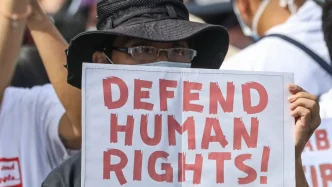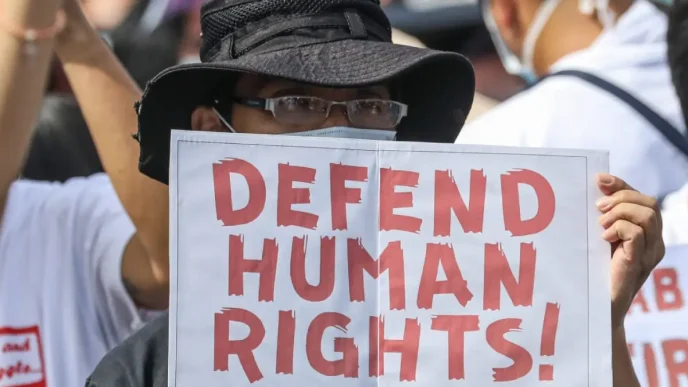In a concerted effort to address the trauma of sexual violence, Singapore has introduced a raft of measures in recent years to support victims, from priority queues at police stations to trauma-informed judicial processes. With calls to the National Anti-Violence and Sexual Harassment Helpline rising to 11,600 in 2023 from 8,400 in 2021, authorities and civil society groups are witnessing a growing willingness among survivors to seek help—a trend attributed to heightened awareness and improved access to support services.
The helpline, renamed in 2022 to reflect its expanded role in tackling all forms of violence, including sexual offences, has become a critical lifeline. Meanwhile, reported sexual assault cases between 2018 and 2022 averaged between 2,200 and 2,400 annually, covering crimes such as rape, outrage of modesty, and offences against children or vulnerable individuals. These figures, alongside personal accounts from survivors, underscore the urgent need for systemic change, which Singapore is now attempting to address through reforms across policing, social services, and the judiciary.
Breaking Down Barriers to Reporting
One of the most significant shifts has been in how victims are treated when they come forward. Since January 2023, priority queues at neighbourhood police centres ensure that survivors of sexual crimes are fast-tracked, sparing them long waits in distressing environments. Private interview spaces and the support of Victim Care Officers—whose numbers have grown from 11 in 2014 to around 250 today—offer emotional and practical assistance throughout the criminal justice process, according to the Singapore Police Force (SPF).
Further innovations include partnerships with community organisations like SG Her Empowerment (SHE). At the SheCares@SCWO centre, police officers conduct interviews on-site for certain serious sexual crime cases, reducing the discomfort and inconvenience of travelling to a station. The SPF’s Sexual Crime and Family Violence Command, established in April 2023, aims to elevate investigation standards and provide better oversight for such cases.
Ms Faith Lee, assistant head of Care Corner Project StART, which runs a Sexual Assault Recovery Programme aiding around 40 individuals annually, noted a rise in self-referrals. “We think this can be attributed to heightened awareness about the importance of timely intervention and support,” she said. Beyond police referrals, more survivors are seeking help to process past trauma or accessing services at earlier stages, reflecting a cultural shift towards acknowledging and addressing sexual violence.
Judicial Reforms to Prevent Re-Traumatisation
The Singapore courts have also taken decisive steps to protect survivors during legal proceedings. On 13 January 2025, new measures were introduced to shield complainants from improper or irrelevant questioning during cross-examination. Chief Justice Sundaresh Menon had previously called for judges to play a more active supervisory role in such cases, a stance now reflected in pre-trial checklists designed to flag contentious issues early. Cases involving specific sexual offences are now assigned to experienced, specially trained judges.
Stefanie Yuen-Thio, chairwoman of SHE, welcomed the reforms, arguing they send a “strong signal” that sexual violence cases require unique judicial consideration. “Victims of sexual violence may wonder if they should blame themselves and feel shame, which may impact how they respond to questions and affect their perceived credibility,” she explained. Trauma can also distort memory, making sensitive handling essential.
Ms Sugidha Nithiananthan, director of advocacy and research at Aware, a local women’s rights organisation, echoed this sentiment. “Survivors often do not recall or articulate their experiences in a straightforward way, and it’s vital for the judiciary to recognise these nuances,” she said. A trauma-informed judiciary, she added, reassures survivors that their cases will be handled with fairness and understanding, addressing a key barrier to reporting: the fear of not being believed or enduring a re-traumatising court process.
Yet challenges persist. Ms Sugidha pointed out that some survivors report inconsistent experiences with police, including poor handovers between officers and a lack of trauma awareness, leading to feelings of being unsupported. In extreme cases, survivors have considered withdrawing from court proceedings due to the distress caused. While Aware’s Sexual Assault Care Centre saw a drop in clients from 1,032 in 2021 to 786 in 2023, the organisation still handled 713 calls related to sexual violence last year, including 113 involving technology-facilitated abuse.
The Hidden Toll of Online Harms
As digital platforms become battlegrounds for abuse, the conversation around sexual violence is expanding to include online harms. Law Minister K. Shanmugam revealed in a parliamentary reply in August 2024 that the SPF received an average of 340 reports annually between 2021 and 2023 related to voyeuristic or abusive images. However, the police do not currently track cases involving deepfakes or AI-generated content, a growing concern in an era of generative technology.
Mrs Yuen-Thio of SHE stressed that online harms, often perceived as less serious than physical acts, can inflict profound emotional trauma. “Helping the public learn that sexual violence includes harmful online behaviours can deter potential perpetrators and empower victims to seek help,” she said. Such recognition also validates survivors’ experiences, aiding their recovery.
Ms Sugidha shared similar concerns, noting that survivors of non-physical sexual violence frequently feel dismissed. She cited cases like stealthing—non-consensual condom removal during sex—where survivors struggled to have their experiences recognised as crimes, even by medical staff. “Dismissive reactions deepen survivors’ trauma and reinforce the misconception that only certain forms of sexual violence ‘count’,” she warned.
Progress and Persistent Gaps
Singapore’s multi-pronged approach, from helplines and specialist centres to judicial reforms, marks significant progress in supporting survivors of sexual violence. The expansion of Protection Specialist Centres since January 2023 to cover all forms of sexual violence, alongside increased public awareness, has encouraged more individuals to come forward. Yet, as Ms Sugidha noted, gaps remain. Public knowledge of new accommodations like priority queues is limited, and inconsistent handling by authorities can undermine trust.
The data paints a complex picture. While helpline calls have surged, indicating greater willingness to seek help, the drop in cases reported to Aware’s centre suggests that barriers—whether emotional, systemic, or informational—still deter many. Addressing these requires not just policy changes but a broader cultural shift to ensure survivors feel safe and believed at every stage.
Moreover, the rise of technology-facilitated abuse demands urgent attention. Without specific tracking of deepfake-related crimes or public education on online harms, survivors risk being left behind in a rapidly evolving digital landscape. If unaddressed, these issues may perpetuate cycles of trauma and silence.
A Path Forward with Caution
Singapore’s efforts signal a commitment to reducing the trauma of sexual violence, balancing immediate support with long-term systemic change. If sustained, these reforms could set a regional benchmark for trauma-informed care, provided they are accompanied by consistent implementation and public outreach. However, as advocates caution, the journey is far from over. Ensuring that every survivor—whether of physical or online abuse—feels heard and supported remains a critical challenge for policymakers, law enforcement, and society at large.
The stakes are high. With each step forward, Singapore has the opportunity to redefine how sexual violence is addressed, not just within its borders but as an example for South East Asia. Yet, without addressing lingering inconsistencies and emerging threats like digital abuse, progress risks being uneven. For now, the rising number of helpline calls serves as both a sign of hope and a reminder of the work still ahead.














